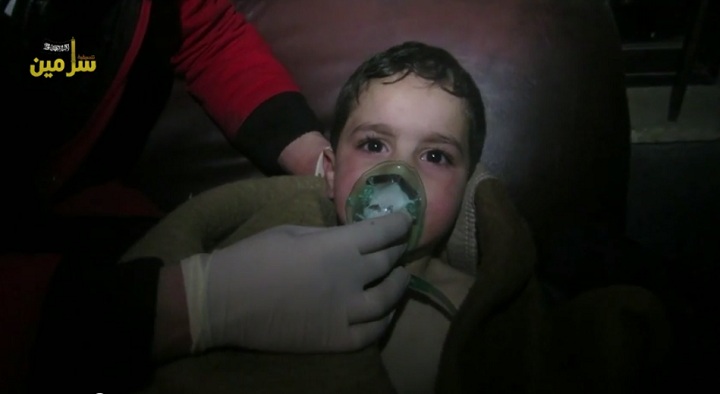WARNING: This post contains details and video some people may find disturbing. Discretion is advised.

Footage of an alleged chemical attack in Syria was so unsettling it reduced some United Nations delegates to tears.
“If there was a dry eye in the room, I didn’t see it,” United States ambassador to the UN Samantha Power said after viewing a video at UN Headquarters in New York on Thursday.
The video of the March 16 attack, in Idlib governate, reportedly showed doctors rushing to help children affected by what has been called a chlorine gas attack.
READ MORE: Syrian troops may have used toxic chemicals in attacks
Power didn’t place blame for the attack but suggested which side of Syria’s brutal four-year civil war may have the capabilities to carry out such an attack.
According to the New York Times, the footage the 15 envoys watched in the closed-door UN Security Council meeting contained images of three young children, their parents and grandmother — all of whom died.
Other video posted on YouTube purportedly shows the aftermath of the attack.
The above video was posted by a media activist group known as Sarmeen Revolt, located in the town of Sarmin, where the attack took place. The group has actively posted footage on YouTube since 2011 and the group’s videos have been corroborated by the social media newswire Storyful.

Get daily National news
Dr. Mohamed Tennari, a doctor in Sarmin, told the UN diplomats “it was chaos” at the hospital where he worked as nearly 120 people sought treatment after the bombs dropped, the New York Times reported.
Patients had no option but to wait lying on the floor because there were too few beds to handle the barrage of victims.
READ MORE: Syrian girl raises hands in ‘surrender’ in heartbreaking photo
Tennari tried to save the three children seen in the video, all between the ages of one and three years old, the Times reported.
He said the family’s basement apartment turned into “a gas chamber” after the gas was released.
Similar attacks in Idlib followed in the days after the March 16 bombings and, according to the BBC, activists alleged there were five more chlorine-filled barrel bombs dropped on Thursday as the Security Council member representatives were in the meeting.
The Nobel Peace Prize-winning Organization for the Prohibition of Chemical Weapons (OPCW) — the international body that oversaw the documenting and destruction of the Syrian government’s stockpile of chemical weapons — has been monitoring the claims of “toxic chemicals” used in attacks on Idlib.
“This matter is of serious concern,” OPCW Director-General Ahmet Üzümcü said in a March 25 statement.
The OPCW has been investigating reported chlorine attacks in Syria since spring 2014.
Human Rights Watch said Monday “evidence strongly suggests that Syrian government forces used toxic chemicals in several barrel bomb attacks in Idlib.”
The New York-based human rights monitoring organization said the attacks happened between March 16 and 31 and “affected at least 206 people.” That included the family of six seen in the footage screened at the UN.



Comments